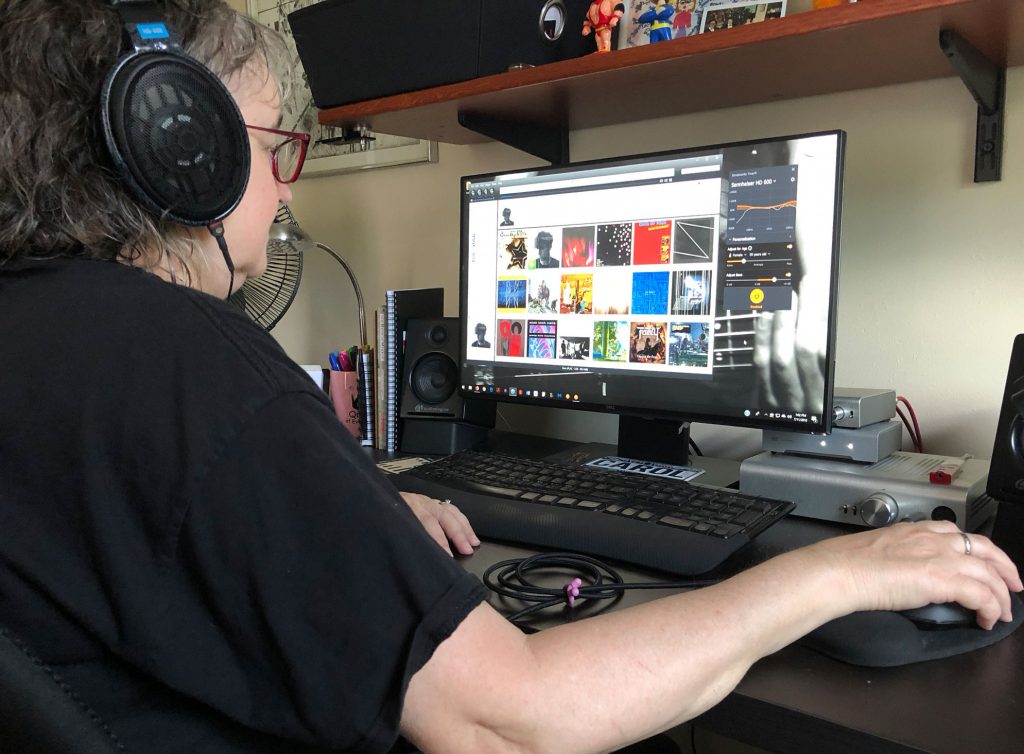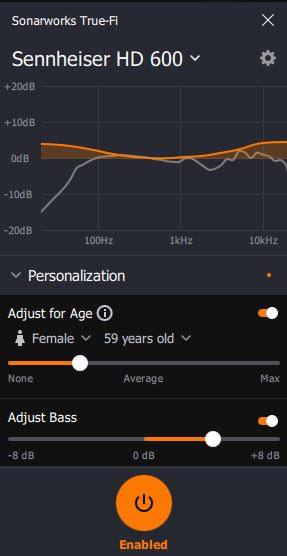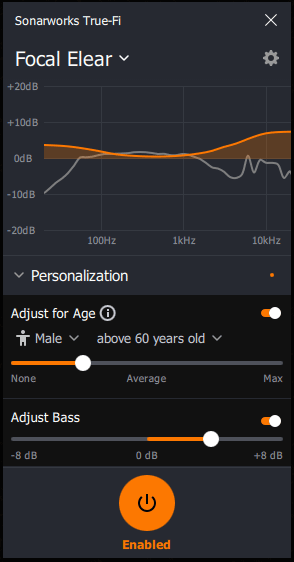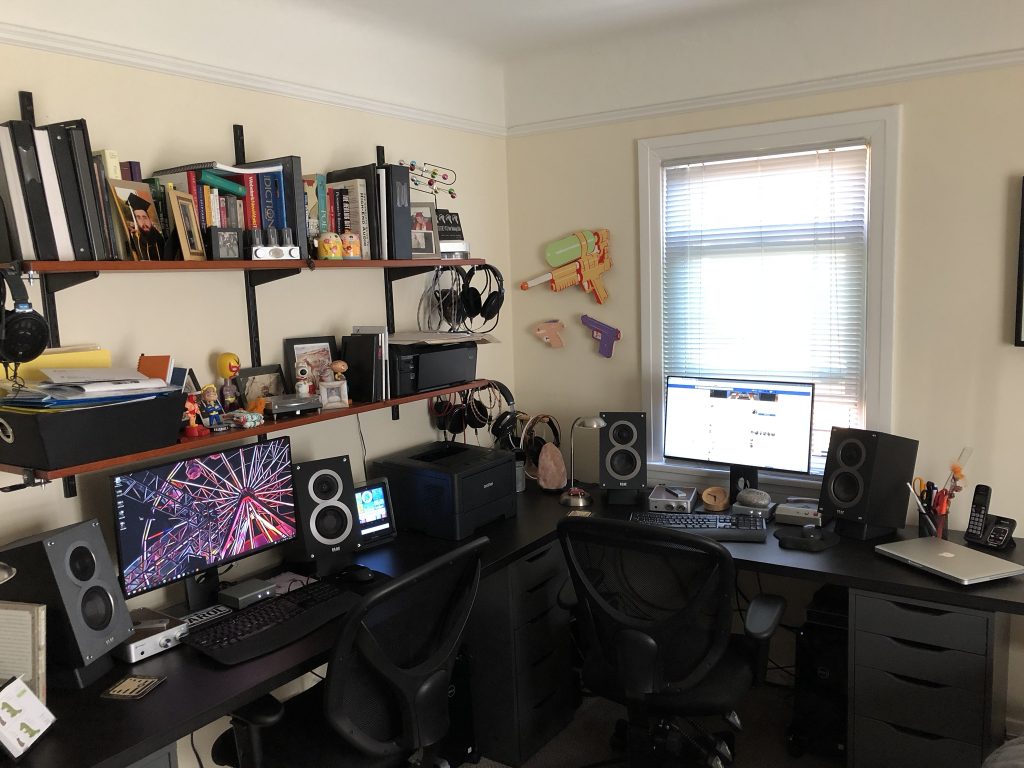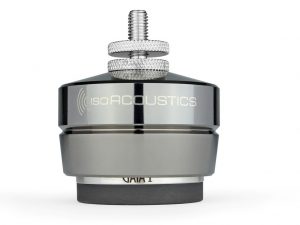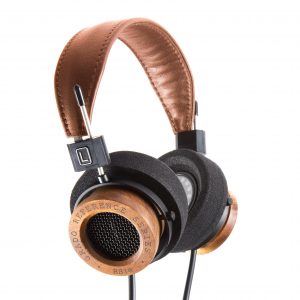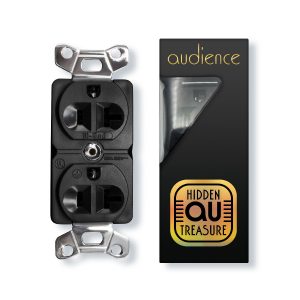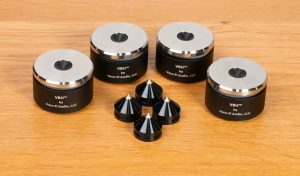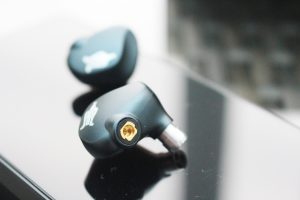This past April Dave and I went to CanJam SoCal in downtown Los Angeles. It was a great show, and even though the venue was huge, it was easy to navigate. One of the first exhibitors we came across was Sonarworks. According to their website, they are "on a mission to ensure everybody hears music the way it was meant to be. Across all devices." Fittingly, at a headphone show, they were demonstrating their product True-Fi.
What follows is another tag-team effort by Dave and me, our thoughts and impressions on True-Fi.
Carol
Sonarworks True-Fi was the first booth we encountered when we entered the show. I will admit, for the record, that I'm skeptical about things like this. Initially, I wanted to smile politely and say, "No thanks," but the people were very pleasant, and it was hard to walk away. After I selected something acceptable from the audiophile-approved list of demo tracks, I listened. At first I thought nothing was happening, but then they enabled the app. The difference was remarkable! I know that for me, personally, I need to review a product with music I know and like, songs that have an effect on me. When they asked if we'd like to review, I jumped at the chance.
I can't give you all the technical description of what this product does. Essentially, True-Fi endeavors to correct your headphones to give you original studio sound. From their site:
By knowing the acoustic properties of most popular headphones, we can apply correction using our patented technology. We’ve taken thousands of headphone measurements and have captured the acoustic properties of over 120 different models of headphones with our patented, industry leading measurement technology. This combined with our sound processing engine and high-res filter technology allows True-Fi to deliver unprecedented studio sound on the most popular headphone models.
Once I had True-Fi installed on my Dell desktop, the next step was figuring out how to listen to music. I rarely listen to music directly on my computer. My system consists of Audioengine 2 loudspeakers, Schiit Jotunheim, Wyrd, and Loki. For music playback, I use JRiver Media Center 22. Well, I say that, but I only ever power up the Audioengines and Schiit gear when I want to watch a YouTube video, or there's a funny dog video on my Facebook feed. For serious music listening, I either go to the main system, or use my Astell & Kern AK70.
Recently I've been on a quest to, well for lack of a better word, be a real audiophile. I've always enjoyed listening to music, but playing with gear was something I left to Dave. When we took our system apart to have the room painted, I was an active participant in putting it back together. I wanted to figure out the magic of listening to music on this computer system on my own. Fortunately, JRiver is extremely intuitive. I managed to create a playlist, and even import missing cover art. I'm not a hundred percent sure it is the best way to play music back, but I must tell you, I was impressed with myself for making it work. One more thing I discovered I liked with JRiver is that there is a setting that allows for no silence leading and trailing, thus the songs meld into one another. Super cool!
There is a bit of set-up to do with the True-Fi app. First step is to find your headphones on a drop-down menu. I use Sennheiser HD600s, and they were listed. Next, you choose male or female. There is not a nonbinary setting available, so unfortunately you just have to choose one. I tried both, and honestly the female setting sounded better to me. Then, you choose your age. It starts with "under 21," then lists ages 22 through 60, and finally "above 60 years old." There is a little information button which explains that hearing naturally changes over time, and you can adjust for age-related hearing loss. Gee, thanks. I also tested this and found that there is a difference between the setting for 49 and 59, and you guessed it, 59 sounded better to these 59-year-old ears. There are two slider bars, one to adjust for "none to max" directly under where you've set your sex and age. I'm not sure what that's for, and didn't detect much difference as I moved it. There is an on/off button for this feature, and I noticed a difference when I turned it off, I liked it better when it was turned on. The other slider bar is for bass, and I slid it halfway between 0 dB and +8 dB. I like bass.
Now, at this point I need to tell you that this review was hard to write. Why, you ask? Because, I had so much fun listening to music I didn't want to stop to write the review! Below you will find a screen cap of the app when it is launched. You simply tap the orange enabled button, the program turns off and returns you to the normal curve for your headphones. The sound flattens out, an analogy I would draw is that True-Fi makes your music feel like a three-dimensional diorama, and when you turn it off it feels like all you're left with is a flat photograph. I especially noticed the difference in the dynamics of the bass. With True-Fi enabled you feel like you're in a studio with the musicians, once you turn it off the bass becomes distant and not at all engaging. The vocals also flatten out and become not nearly as exciting with True-Fi disabled.
If one adjusts the bass, the orange line reflects that as well.
I really enjoy listening to the sound of singers' voices. I am not sure I can convey what I mean, but many times with music, it's the sound of the voice that really engages me. There's a breathy quality that is hard to describe, but it can send shivers down my spine. Case in point, "Beg and Borrow" by Gravity Kills off their Superstarved album. This song runs the gamut from almost a whisper, to nearly a scream. With the True-Fi turned off I can hear the passion in Jeff Scheel's voice, but when I enabled it again it felt like he was standing behind me, singing right into my ear. Sonarworks says they allow you to "experience what your favorite artists hear in their studios," and this track allowed me to hear what they mean. Without True-Fi I enjoyed the song like I always do, but once the app is enabled there was just, well to quote what Dave sometimes says, there was more there there. Obviously, I've never been in a studio, so I don't know what music sounds like in a studio, but there is a startling difference with True-Fi. It made this track even more magical that it usually is.
My latest musical obsession is The Soft Moon's album Criminal. I am particularly infatuated with the track "Burn." As I sat here and pushed True-Fi's orange button on and off I was amazed at the change. There isn't a breathy quality to Luis Vasquez's voice really, but passion drips from every word. Again, it's there with the True-Fi app turned off, but once you enable it it's almost overwhelming. Without the app it feels like you're hearing the song through a curtain, and it is torn away with it enabled, all of Vasquez's angst washes over you.
Finally, I will mention UNKLE's "Farewell" from The Road. This song always makes my eyes well up with tears, as in my mind it is symbolic of the bond that Dave and I share. My eyes welled with True-Fi turned off, but tears spilled over when I turned it on. Stunning!
You don't have to take my word for it, at the Sonarworks True-Fi website you can download a trial. The app works for both PC and Mac. At $79, I think it's worth it if you listen to a lot of music with headphones on your computer. The difference is immediate, and startling. I would highly recommend it.
Dave
Carol pretty much said all that needed to be said, but if you know me, well I have to say something! Alright, so think of this as what DEQX does with loudspeakers—calibrates them through measurements and then the use of DSP software to allow the loudspeaker, or in the case of a headphone (a number of the same headphone is measured to get more or less an average of that model's frequency curve addressing variability within production) to allow the headphone to perform far beyond the limitations of its design and materials. And one can still tailor the "fix" to their liking by making further adjustments at their end. Yeah, it is their curve or fix so you either accept it or not... but then no one can create a perfect headphone or speaker that is, well... perfect in terms of measurements and whatnot. As I said, there are too many limitations... from the materials and design to anything and everything else that can get in the way of sonics and sound, so there will always be trade-offs. Sonarworks True-Fi addresses this with their DSP corrections.
I used the Sonarworks True-Fi with two headphones: the Focal Elear and the Sennheiser HD600. See the screen shot below for the Elear. The orange curve is how the software actually corrects the original frequency curve to a 'flat' (SR) standard while showing the frequency being elevated in the treble (the grey line is how the headphones actually measure). As an aging male above 60, I need this elevation. This is defeatable if one prefers to not adjust for age or sex.
End result? The better the headphones the less significant the results.... the Elears definitely sounded better in every aspect, but the HD600 had the biggest jump in overall musicality. Meaning that the improvement is there regardless the headphone—but whether that matters to you is up to you and your hearing and preferences. With either headphone the resolution was increased as was presence, spatiality, air, bass quality, etc.. Listen to any of the releases by Boris Divider... truly mesmerizing; tactile, presence... space and resolution. His music is quite wonderful and with the Sonarworks Tru-Fi I am able to get way deeper into it than without. Clarity but not superficial clarity. Nothing is being hyped... just natural and sweet.
The Sonarworks Tru-Fi works and makes listening to headphones WAY more engaging... and way LESS tiring... make that WAY LESS fatiguing. Less disjointed with than without. Of course till you try it, you won't know how much better your music can sound, or be more cohesive. The music sounds more right and all... with less confusion. Like what I heard when I used the DEQX with my Reimer loudspeakers, music was just better, WAY better. Highly recommended. BTW, if your headphones are not listed (and the list is continually growing) there is an option to have your headphones calibrated for $148. Way cool.
Retail: $79
Sonarworks True-Fi




